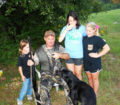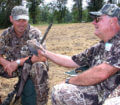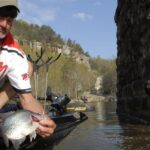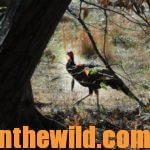Editor’s Note: Jared Mophett of Honey Brake Lodge (www.honeybrake.com) in Jonesville, Louisiana, has been keeping dogs tuned-up and ready for dove season for over 20 years. “I’ve learned plenty from great trainers on how to keep our dogs at Honey Brake in peak performance to retrieve,” Mophett says. Mophett also competes his dogs in the Amateur Division of retrieving dog competitions and in the Super Retriever Series and explains, “I run some dogs in the hunt test. I also have some dogs with professional trainers.” Often, when you’re talking about retrievers, some waterfowlers don’t like to use their duck and goose dogs to pick up doves. But according to Mophett, he tunes up his Labradors before dove season and hunts them during dove season. He believes his dogs are better prepared to find and retrieve waterfowl by his working with them well before dove season arrives. He says you need to expect your dog to perform just as well in the dove field as it does in the duck blind. Remember that you’re training your dog while it’s dove hunting. Let’s look at 10 secrets for getting your retriever prepared for dove season.
 Tip 5: Train Your Dog on How to Mark
Tip 5: Train Your Dog on How to Mark
Your retriever should understand the word, “Mark,” and should know how to respond to that word. This is an important part of the retriever’s training. So, every training session, throw a bumper in the air, and tell the dog to mark. By repeating this drill over and over, the dog understands that it’s supposed to be looking in the air for something that is falling, and the dog should notice that object to determine whether it’s a dove, a duck or a goose. The retriever should stay still by its hunter and be totally focused on the bumper’s flight through the air, and where that bumper hits the ground. If the dog isn’t paying attention, it won’t be able to see the bird fall and know where it is when the hunter sends it out to retrieve that bird. This drill teaches the dog to constantly be looking for the bird to fall that the hunter has shot and helps it know where to go when it’s sent to find the bird, pick it up and bring it back to the hunter. During this part of the dog’s training before dove season, you want to throw the bumper out to different distances to help the dog learn to look for the bird to fall at various distances. You also need to throw the bumper to the left and the right of where the dog is sitting. Then the dog becomes more mentally involved and concentrating on the birds in the air and where they fall after the shot. The dog shouldn’t be allowed to break from the sitting position when the bumper or the bird hits the ground. Only when the dog’s sent by his handler should the dog be allowed to make the retrieve.
Tip 6: Train Your Retriever to Take Hand Signals
If your dog has been trained to take hand signals, then you need to work it on hand signals and making blind retrieves. If the dog is focused on the bird you’re shooting, you may shoot a second bird, and the dog may not see it fall, or the bird may fall out of sight of the dog. If the dog has been taught three hand signals – right hand over left hand, over and back – then when you’re tuning the dog up for dove season, you need to work the dog with those hand signals. Then there’s no misunderstanding between you and the dog on which direction you want it to go.
 When you blow a whistle, the dog should stop, turn around and look at you. If you move your right hand above your head and over to the left, you’re telling the dog you want it to go in that direction to look for the bird. If you put your left hand in the air and bring it from your left to your right, this motion is telling the dog you want it to go to the right. When you blow the whistle, the dog looks at you, and you put your hand straight up in the air and bring it down in front of you and use the word, “Back,” the dog needs to turn around and hunt farther back than where it was searching for the bird before you gave it the hand signal for “Back,” and said the word, “Back,” to direct the dog. This process is known as three hand casting – the basic casting (hand signals) that well-trained retrievers should know and understand. If the quarterback on a football team is getting rushed, and he rolls out to the right or to the left and spots a receiver, he’ll often use one hand to direct that receiver to turn and run straight down the field or to break to the left or to the right. These are the same signals that a handler gives his retriever when the dog is searching for a downed bird.
When you blow a whistle, the dog should stop, turn around and look at you. If you move your right hand above your head and over to the left, you’re telling the dog you want it to go in that direction to look for the bird. If you put your left hand in the air and bring it from your left to your right, this motion is telling the dog you want it to go to the right. When you blow the whistle, the dog looks at you, and you put your hand straight up in the air and bring it down in front of you and use the word, “Back,” the dog needs to turn around and hunt farther back than where it was searching for the bird before you gave it the hand signal for “Back,” and said the word, “Back,” to direct the dog. This process is known as three hand casting – the basic casting (hand signals) that well-trained retrievers should know and understand. If the quarterback on a football team is getting rushed, and he rolls out to the right or to the left and spots a receiver, he’ll often use one hand to direct that receiver to turn and run straight down the field or to break to the left or to the right. These are the same signals that a handler gives his retriever when the dog is searching for a downed bird.
To contact Mophett at Honeybrake, call 318-775-1007.
To learn more about hunting, check out John E. Phillips’ print, Kindle and Nook eBooks and audiobooks at johninthewild.com/books.
Tomorrow: Teach Your Hunting Dog How to Make Blind Retrieves and How to Treat Doves
















